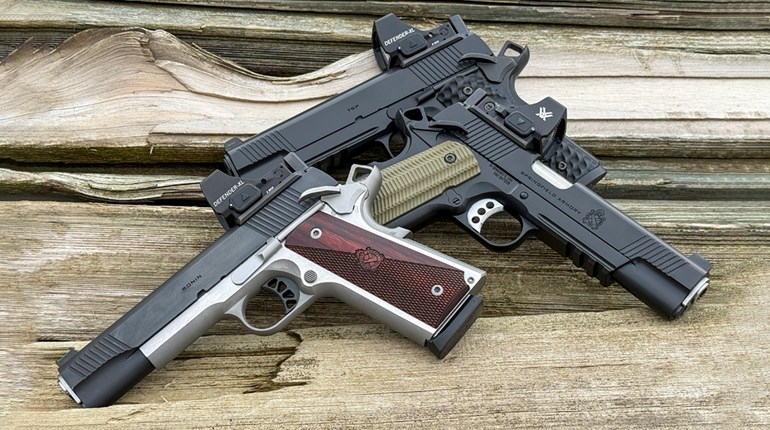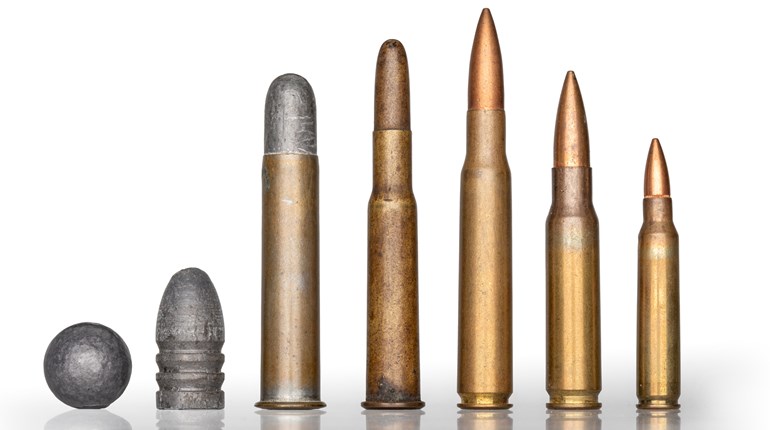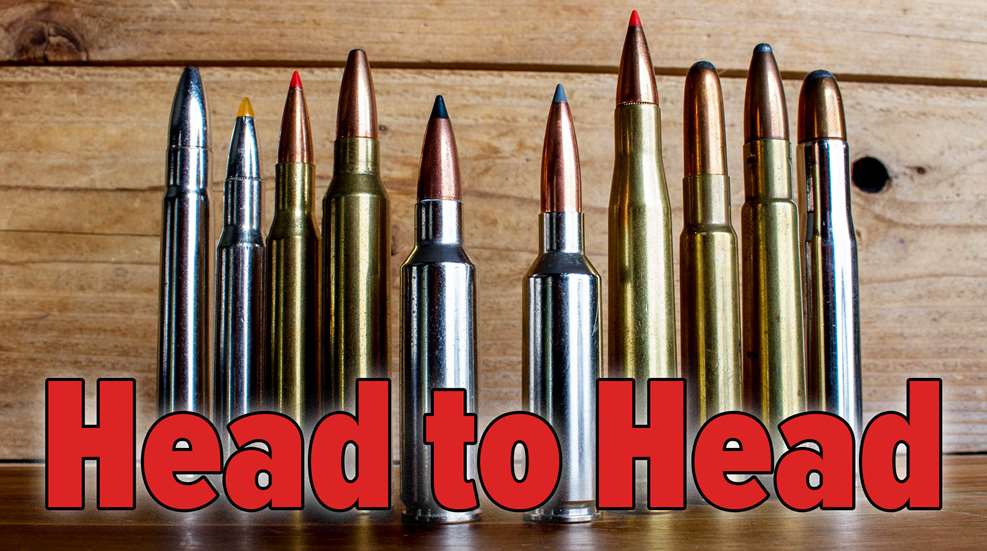
When choosing a cartridge—whether it be for a handgun or rifle—the availability of ammunition is always a concern and rightly so; if you can’t keep a decent supply of ammunition on hand, the firearm is useless. This point becomes even more poignant if you are a hunter who travels far from home, relying upon the airlines to deliver their belongings each and every time.
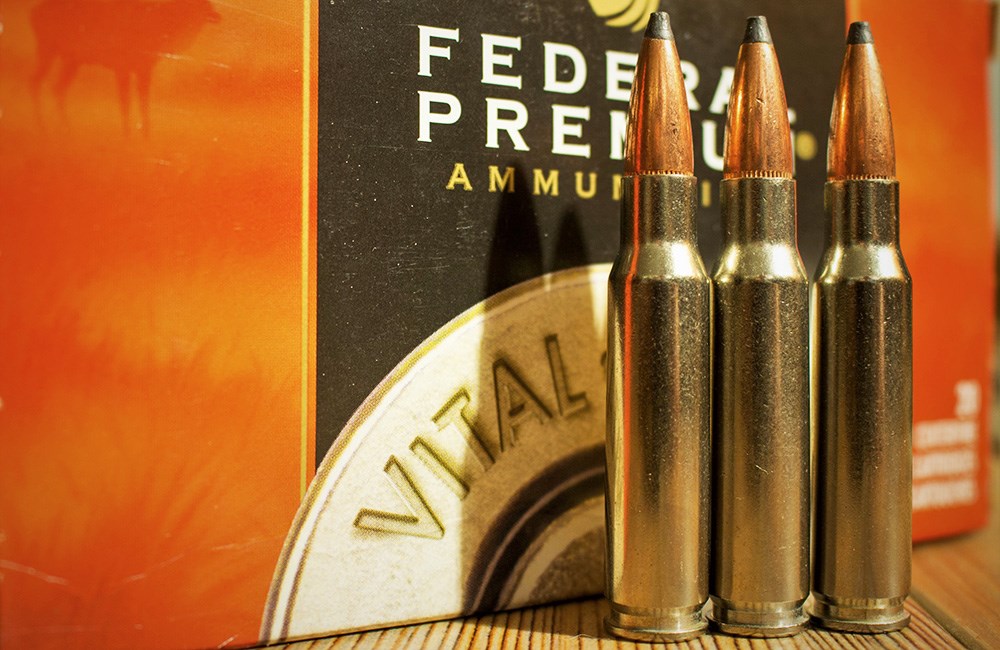 .308 Winchester
.308 Winchester
“Can I buy ammo for that rifle at a Mom-and-Pop gun shop in rural Wyoming?” This is a question often asked by those who tend to hedge their bets when it comes to ammo availability, and to a certain degree, it is a valid question. Should your rifle arrive but not your ammunition, you might be hard pressed finding ammunition for an obscure cartridge. Knock wood, in all the hunts I’ve done around the globe, this has never happened to me (I probably just jinxed myself), but I know for certain that I’d have a helluva time finding ammo anywhere for my .318 Westley Richards—it just doesn’t exist. Does that mean I don’t travel with the .318? Absolutely not.
For years, my only serious big-game rifle was a Ruger M77 MKII chambered in .308 Winchester, one of the most popular hunting cartridges. From there I added a .375 H&H Magnum, and then a .300 Winchester Magnum. While the .375 H&H might not be popular here in the U.S., it is highly popular in Africa and can be found in most camps, and the .300 Winchester Magnum and .308 Winchester are readily available in just about any store selling ammunition. Any of the three would make a sensible choice for the traveling hunter.
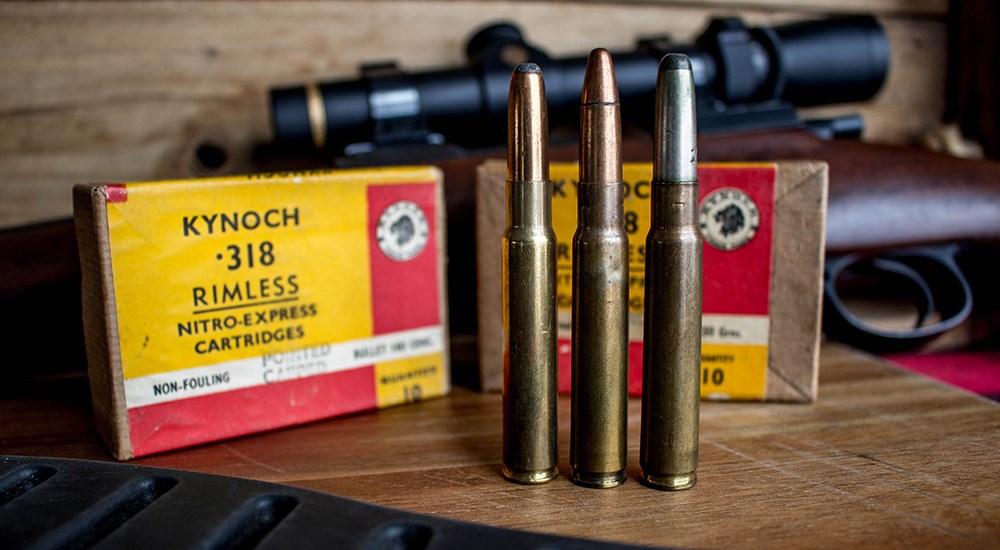 .318 Westley Richards
.318 Westley Richards
I also enjoy some of the obscure cartridges, including the .318 Westley Richards, .300 Holland & Holland Magnum, and .404 Jeffery; more recently I've come to embrace the 6.8 Western. Of the lot, the relatively-new 6.8 Western is the one you’ll most likely find on shelves. In fact, shortly after its release, there was more 6.8 Western ammo at the local gun shops than there was .30-06 Springfield. Regarding the other three, you might get lucky and find a box of .300 H&H Magnum once in a great while, but .404 Jeffery is as rare as hen’s teeth, and .318 Westley Richards hasn’t been made in years. I could probably choose more popular and readily available cartridges to give me a similar performance level, but the obscurity of these cartridges (minus the 6.8 Western) is part of the allure, at least to me.
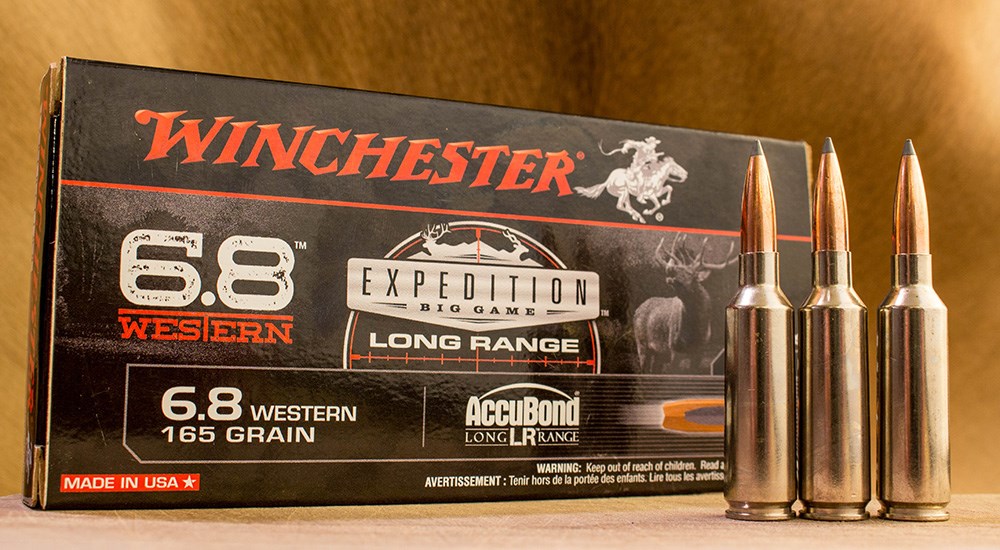 6.8 Western
6.8 Western
While my chosen rarities might be on the extreme side, it does warrant the discussion of the benefits of choosing a cartridge which is highly popular and ready available (some see this as following the herd) or bucking the system to find a unique and/or possibly obscure cartridge which few others embrace. For example, I've got an acquaintance who is head-over-heels in love with the .308 Norma Magnum; he buys all the factory ammo he can find, and really enjoys hunting with the cartridge. Wouldn’t the similar .300 Winchester Magnum—which you can find at nearly every gun shop, anywhere—better suit him? He doesn’t feel that way, and really likes using a cartridge he has adopted as his own, and which few others use.
I suppose if we were to embrace only the most popular cartridges, those which would be readily available, the .30-06 Springfield would be in everyone’s hands. It was our military cartridge for nearly the entire first half of the 20th century, makes an excellent sporting round—Dr. J.Y. Jones used it to take all the North American species—and can be handled by almost all shooters. It’d also be a boring world, and Yours Truly would probably be out of a job as a gunwriter.
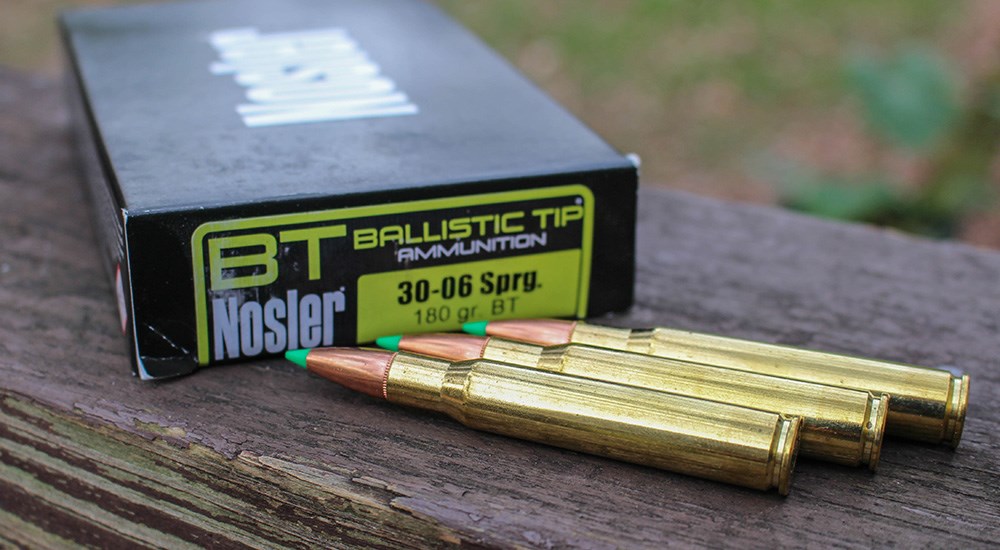 .30-06 Springfield
.30-06 Springfield
That said, I feel that if you do travel to hunt, you should own at least one rifle chambered for a very common cartridge. Your 7x61 Sharpe & Hart might make your heart flutter, but a 7mm Remington Magnum is going to be much easier to feed. Depending on the type of hunt you’re headed on, there might be a spare rifle hanging about camp for clients with luggage issues, or you might even be able to send your ammunition to camp ahead of time. On those self-guided adventures, we’d always have one extra rifle for the group, chambered in something readily available.
It’s pretty common to hear negative comments from the hunting community every time a new cartridge is introduced. “You’ll never be able to find ammo for that!” But, at one point in time, the .270 Winchester was one of these “new-fangled designs” until Jack O’Connor showed the hunting world just how good a cartridge it really was, and that was almost a century ago. The inevitable comparisons to the .30-06 and 7x57mm Mauser sprang up, and fueled a good many cartridge debates. The same can be said for the .300 Winchester Magnum and 7mm Remington Magnum of the early 1960s, or the Winchester Short Magnum family of two decades ago. Some cartridges catch on, and others fade away, and the trends which dictate that fate are fickle. One might think that the .375 Ruger—housed in a shorter action, and in a more inexpensive rifle—would have had a detrimental effect on the .375 H&H Magnum, but that really isn’t the case. Same for the .416 Remington Magnum and .416 Rigby; it seems there is a faction which simply enjoys the nostalgia of the classic cartridges, and the connection to the past that they bring.
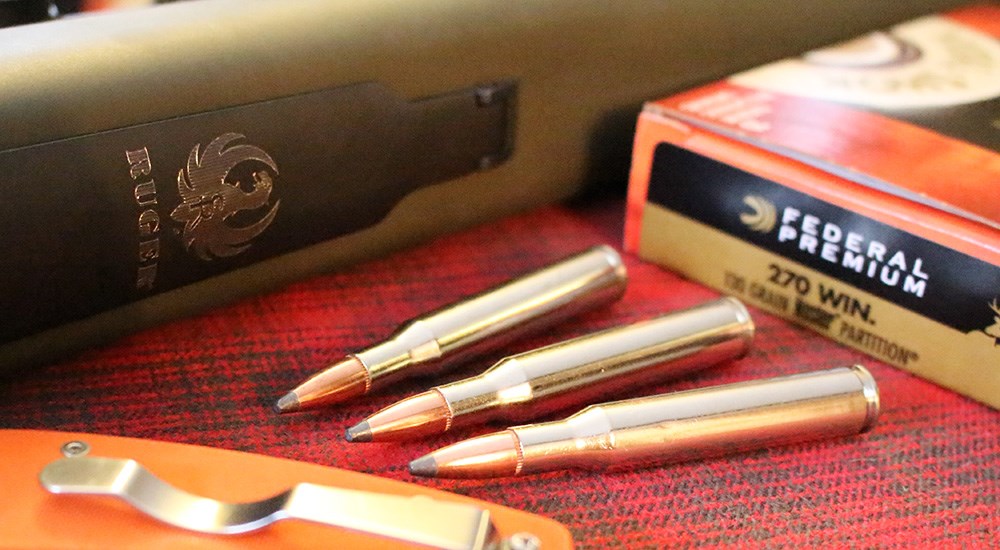 .270 Winchester
.270 Winchester
Perhaps it’s the individual connection with a particular cartridge that sends us in search of the obscure. Jack O’Connor remains connected with the .270 Winchester, John Wooters championed the .308 Winchester, and all these years later W.D.M. Bell’s name still comes up when talking about the 7x57 Mauser, or .275 Rigby. Harry Selby’s .416 Rigby inspired Robert Ruark, and his Horn of the Hunter probably kept the cartridge alive after WWII. I know I have a soft spot for those choices which are a bit left of center, and when scouring the dusty corner of gun shops I get excited when I see a .348 Winchester, .22 Savage HiPower, or .350 Remington Magnum.
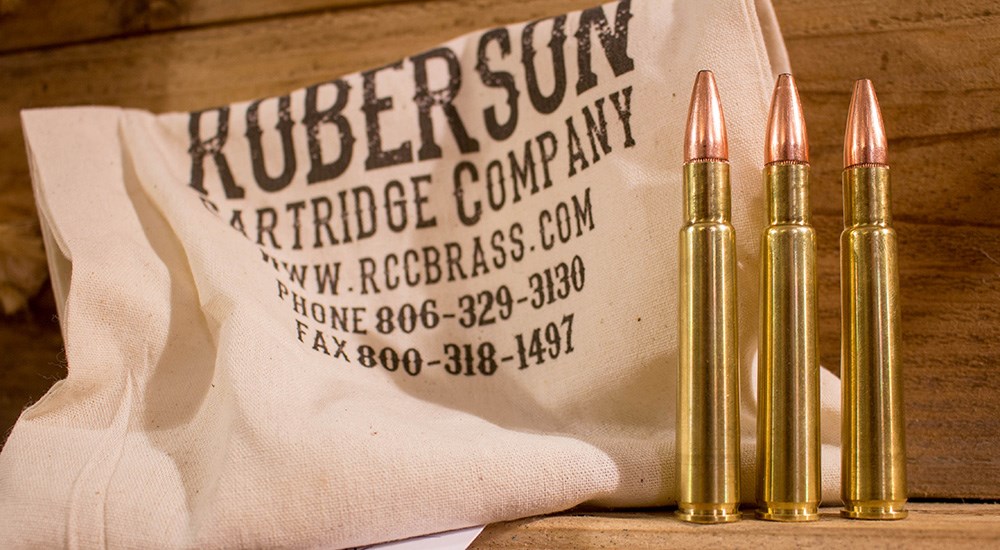 .350 Rigby Magnum
.350 Rigby Magnum
How does a new cartridge survive? Sales. If it sells, it will be produced. The 6.5 Creedmoor is a great example of this; it has been marketed very well, and certainly gets the job done within the limits of its power. By that theory, an obscure cartridge is one which doesn’t sell very well, so if that obscure cartridge appeals to you, you’ll have to source either components for reloading, or what amount of factory ammunition exists. Some obscure cartridges can easily be made from a more popular one; the .338-06 A-Square and .318 Westley Richards can both be made from plentiful .30-06 Springfield brass, just as .260 Remington and .338 Federal cases can be made from .308 Winchester brass. On the other hand, if you like the .350 Rigby Magnum (and I sure do), you’re in trouble, because the case design is unique.
The classics will always be classics—the .45-70 Government has hung on for 140 years now, while the .45-90 and .45-110 are all but gone—and I’ve said many times that I can handle any hunting scenario with a cartridge made prior to 1930. But there is also the appeal of the enhanced performance of cartridges like the 6.8 Western, .28 Nosler and 7mm PRC, and I say if one of those appeals to you, go get it.
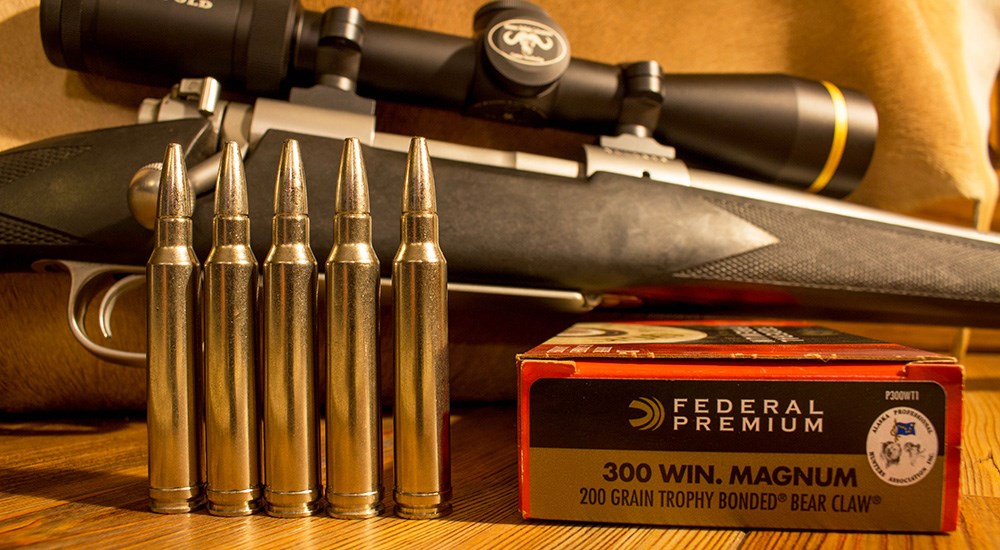 .300 Winchester Magnum
.300 Winchester Magnum
Unless the cartridge you choose takes a hard nosedive (read .25 WSSM or the Dakota cartridges), you can usually find the components for reloading at the very least. I can also say that my well worn Winchester 70 in .300 Winchester Magnum isn’t being retired anytime soon. That rifle will put just about any brand of ammo into a 1½-MOA group, and in a pinch that will work for just about anything at my hunting ranges.
Looking for previous installments of our "Head to Head" series? Click here.













